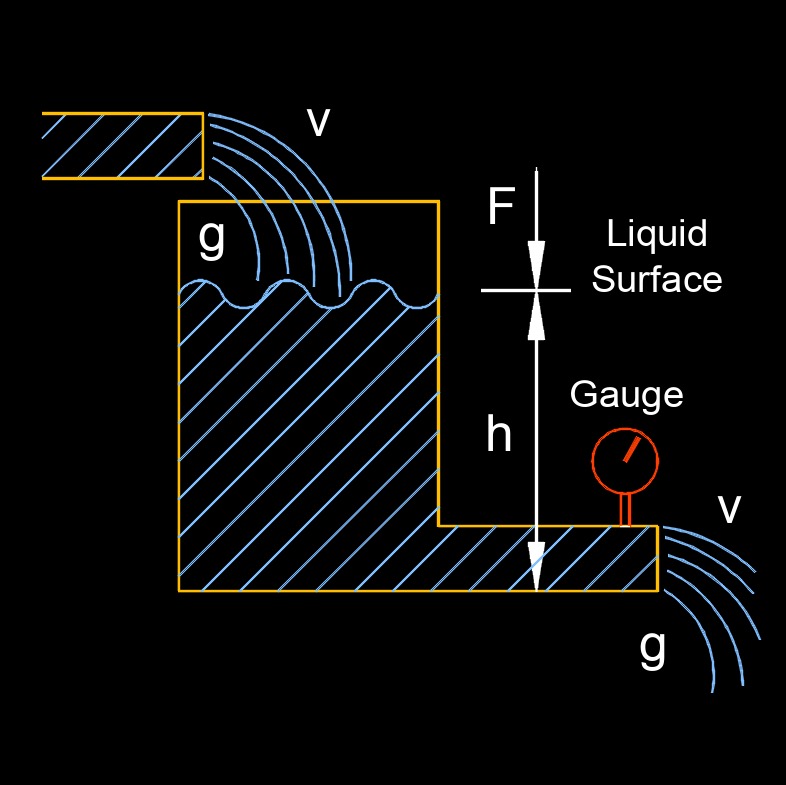Head Pressure
Head Pressure Formula |
||
|
\( p \;=\; \dfrac{ h \cdot SG }{ 2.31 }\) (Head Pressure) \( h \;=\; \dfrac{ p \cdot 2.31 }{ SG }\) \( SG \;=\; \dfrac{ p \cdot 2.31 }{ h }\) |
||
| Symbol | English | Metric |
| \( p \) = Head Pressure | \(lbf \;/\; in^2\) | \(Pa\) |
| \( h \) = Head or Height | \(ft\) | \(m\) |
| \( SG \) = Specific Gravity | \(dimensionless\) | \(dimensionless\) |
| \( 2.31 \) = Conversion Factor (2.31 Feet of Fresh Water = 1 psi) | \(dimensionless\) | \(dimensionless\) |
 Head pressure, also called static head or static head pressure, is the pressure at a specific point to the vertical distance at another specific point. The pressure is effected by gravity and height. The pressure exerted at top of the liquid column is less than the pressure exerted on the base of the column, so where you place the gauge will effect the reading of the head pressure.
Head pressure, also called static head or static head pressure, is the pressure at a specific point to the vertical distance at another specific point. The pressure is effected by gravity and height. The pressure exerted at top of the liquid column is less than the pressure exerted on the base of the column, so where you place the gauge will effect the reading of the head pressure.
The head pressure is primarily determined by the depth or height of the fluid above a reference point and is influenced by the density of the fluid and the gravitational acceleration in the area. Hydraulic head pressure is used in various engineering applications, including the design and analysis of hydraulic systems, water supply and distribution systems, groundwater flow modeling, and the operation of pumps and turbines. It helps engineers and scientists understand the energy and pressure distribution within a fluid system, which is essential for designing efficient and safe fluid transportation and control systems.

